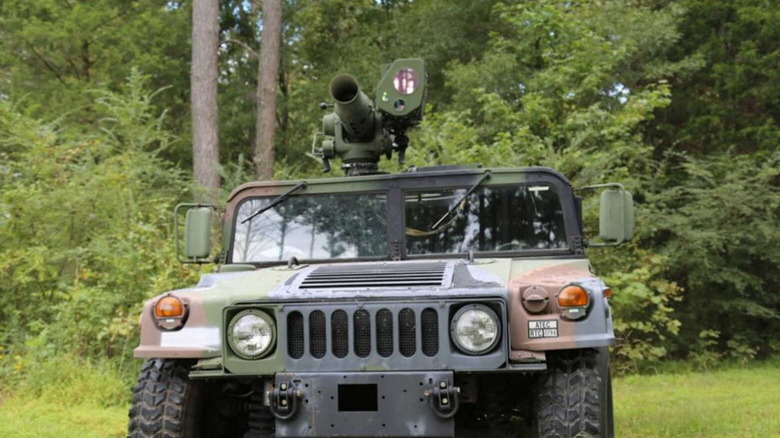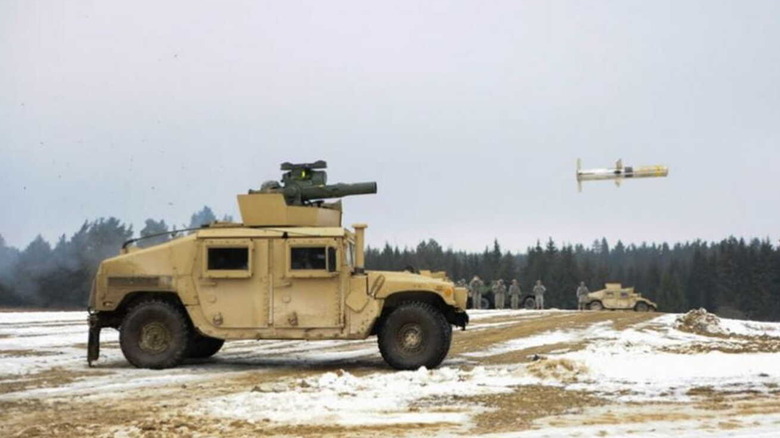What Are TOW Missiles And When Are They Used?
First entering service 55 years ago in 1970, the TOW missile is one of the most prolific anti-armor weapon systems, with over 700,000 units produced since its introduction. Also called by its acronym, like the larger and more powerful HIMARS rocket system, TOW stands for Tube-launched, Optically tracked, Wire-guided. The TOW missile was designed and developed by the Hughes Aircraft Company, as a replacement for the older anti-armor weapons like the crew-portable M140 106mm recoilless rifle and the ENTAC missile from France.
Specifically engineered to eliminate heavily armored military vehicles such as tanks, the TOW missile works by remote control. This is made possible by the command-to-line-of-sight guidance system, where the operator will visually track the target, and the onboard computer system will determine the most likely intercept paths for the missile. Additionally, the missile can also be guided by the operator using course correction signals sent over two very thin wires that are several thousand meters long.
Despite being very narrow, the wire can precisely transmit the signal inputs from the operator and can unspool quickly at a rate of ten meters per second. This operator input feature makes it different from fully autonomous fire-and-forget missiles, that fly directly to its target without the need for additional operator input once it's fired.
Proven weapons system
The TOW missile system is small, consisting of a guided missile and a launcher. It measures only 1.17 meters long, with a diameter of 152 mm, and a weight of only 18.9 kilos. This makes the TOW missile portable enough for a crew to carry it around and use it. Alternatively, the TOW Missile can be mounted on ground and air vehicles like the M2 and M3 Bradley and the oldest attack helicopter in the U.S. military. Despite its size, the TOW missile has proven to be an effective platform. Continuous development has resulted in 10 iterations since its inception.
Today, the most commonly used are TOW 2A and TOW 2B, which is primarily operated by NATO, the U.S. Army, and its allies. It's a versatile weapon designed to be armed with different warheads, including a tandem anti-tank or bunker buster variant for the TOW 2A, which can be found mounted on the M1167, the military's version of the Humvee. With over five decades of use, the United States Army plans to continue utilizing the TOW system for at least a couple of more decades. Now made by RTX, the TOW missile is exported and used by 40 countries worldwide.
It's still the United States Army and Marine Corps' main anti-tank weapon, and was upgraded with new features and enhancements, including a wireless guidance systems, in 2010. Lastly, RTX came out with a new launcher called Eaglefire in 2015, that is capable of using both the wire-guided and wireless missiles that will ensure its continued relevance for the modern battlefield.

